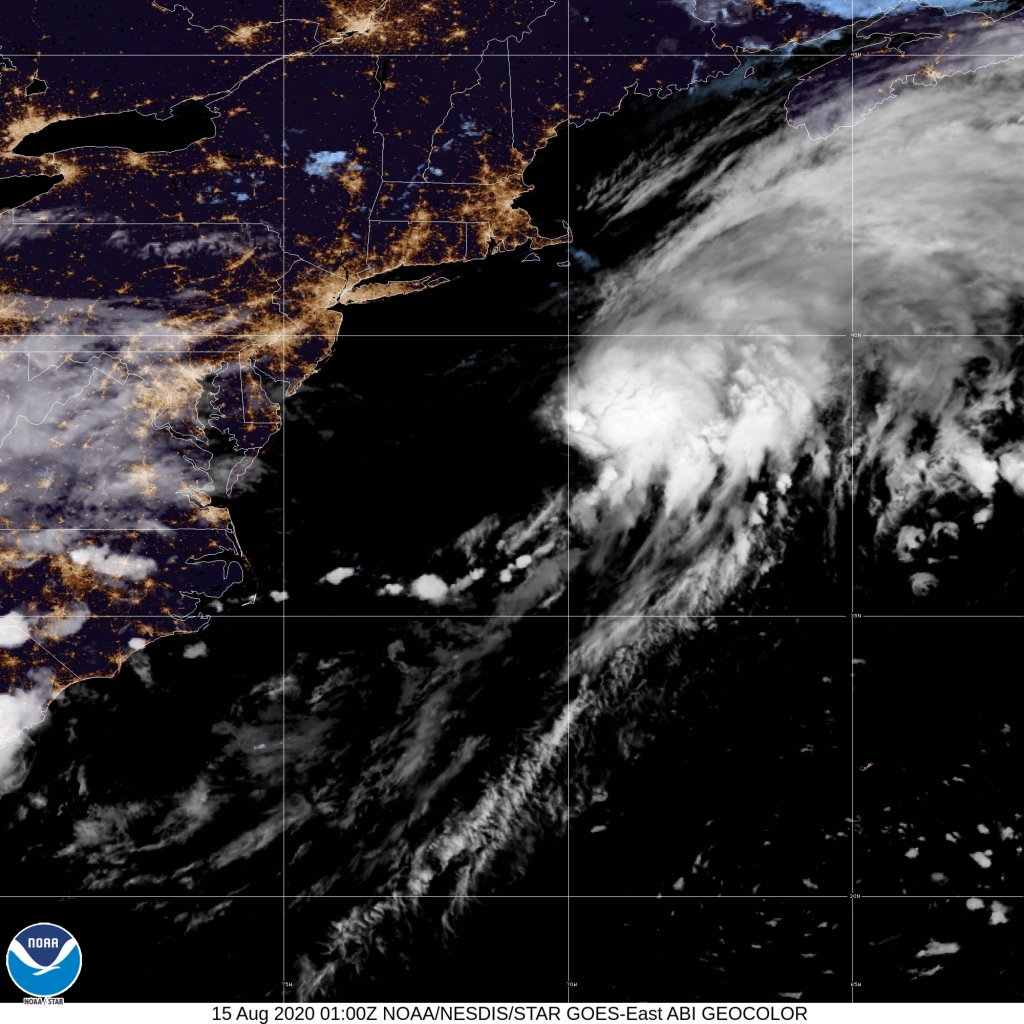After a busy start to the 2020 Atlantic hurricane season, AOML scientists prepare for upcoming tropical cyclone activity that may pose a threat to the U.S. and its territories.
Close collaboration among AOML hurricane scientists, the National Hurricane Center (NHC), and the Environmental Modeling Center (EMC) allows for a comprehensive consideration of potential tropical cyclone targets for NOAA aircraft reconnaissance in the East Pacific and Atlantic tropical oceans.
While tropical cyclone hazard threats have relaxed this week, NOAA hurricane experts continue to assess activity as the peak of the Atlantic hurricane season approaches.

Tropical Storm Kyle became the earliest 11th named Atlantic tropical cyclone on record, quickly forming just offshore of the eastern United States. NHC forecasts the potential for some strengthening as the system sits over warm gulf stream waters before tracking out to sea. Meanwhile, Tropical Storm Josephine maintains its west-northwest trajectory as the system approaches the Lesser Antilles.
Although NOAA does not have plans to collect aircraft measurements in either system, daily assessments of meteorological conditions led by hurricane experts facilitate advanced notice to strategize for possible NOAA Hurricane Hunter reconnaissance in the near future.
This week, AOML scientist Heather Holbach, Ph.D, emphasized the differences in tropical cyclone activity between the Pacific and Atlantic basins. Satellite imagery indicates enhanced cloud and rain activity in the Pacific basin while relatively hostile conditions across the Atlantic basin have suppressed current tropical cyclone activity.
Tropical Storm Josephine, the Atlantic season’s 10th named storm, continues to maintain a coherent circulation despite generally adverse conditions. Unfavorable environmental winds have disrupted Josephine’s circulation, and dry air associated with the nearby Saharan Air Layer has entered into its core. These factors have prevented intensification as the system tracks towards the west-northwest, and NHC forecasts the system to gradually dissipate as it recurves to the north.

In the East Pacific basin, NHC has identified now-remnant Hurricane Elida, Tropical Depression 10, and numerous regions of anticipated tropical cyclone development. NHC forecasts this atmospheric configuration to persist for a few weeks and expects further development through the weekend.
Holbach explains that the striking contrast in activity between the Pacific and Atlantic basins may be attributed to the characteristics of global atmospheric waves that can occasionally cause conditions to be more favorable or less favorable for hurricanes to develop. These waves can enhance or suppress the ability for clouds and rain to be maintained over the tropical oceans as they propagate towards the east.
While an unfavorable environment currently dominates the Atlantic basin, conditions more conducive for tropical cyclone development are expected to move into the main development region in the coming weeks.
>> Scientist K. Ryan
For the latest information about tropical cyclones and other weather systems, please visit the NOAA/NWS/National Hurricane Center.
For information on numerical prediction of tropical cyclones, please visit NOAA/NCEP/Environmental Modeling Center.
To access updates on the Intensity Forecasting EXperiment (IFEX) and other activities via Facebook, Twitter, or RSS feed, check out the NOAA/AOML/HRD page.
To directly access updates on IFEX HFP Operations via our WordPress blog on the web, check the site: https://noaahrd.wordpress.com/category/ifex-hurricane-field-program/
DISCLAIMER: The above discussion is intended to provide a brief summary of recent and future HRD Hurricane Field Program Operations. Any use of this material beyond its original intent is prohibited without permission of the HRD Director, Frank Marks (Frank.Marks@noaa.gov). Media inquiries should be directed to AOML Communications (aoml.communications@noaa.gov), Monica Allen (301-734-1123) or Monica.Allen@noaa.gov.